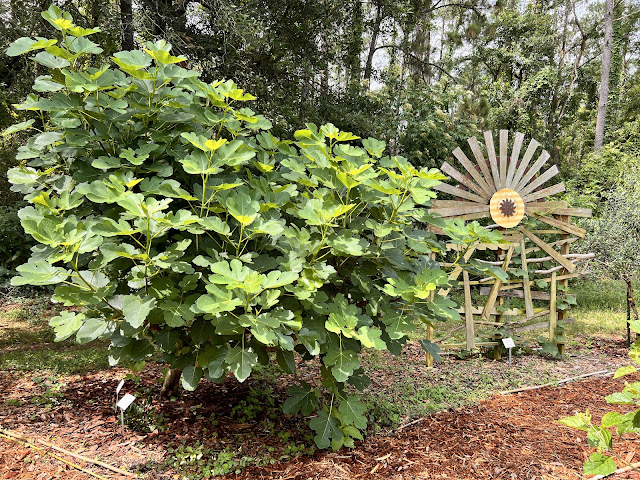If you are one of the hundreds of people who would have enjoyed tours of the many gardens on the grounds, you will have to wait until next year unless you’d like to visit them and the adjoining orchard on your own any time during daylight hours.
In the VegHeadz garden at the southern end of the property, we were ready to guide you through our many vegetable and pollinator beds. Thanks to Peggy McDonald for these great pictures giving us a virtual tour. As always, photos just can’t capture the wonder of a garden. Again the vegetable gardens and food forest can always be seen and fully appreciated on any day during daylight hours or join us for a personal tour on most Wednesday mornings when we are working there.
 |
| Welcome to the VegHeadz garden as you enter from the east side through the rose arbor. |
 |
| To your right you will see pollinator gardens and sunflowers. |
 |
| There are sunflowers planted throughout the garden. They are great trap plants as they are preferred by stink bugs and particularly leaf-footed bugs. |
 |
| Our main rotation beds are designated as A-D. This is bed D (actually three beds in graduated sizes). This year plants in these beds include tomatoes, peppers and eggplant. |
 |
| Rotation bed C. Plants in these beds include corn and beans. |
 |
| Rotation bed B. Plants in these beds include squashes, cucumbers and melons. |
 |
| We also have four small rotation beds. No bed is too small for good gardening practices. |
 |
| At the far back of the garden in the food forest, this artistic trellis supports chayote vines next to a fig tree with ground cover of longevity spinach. |
 |
| Mayhaw tree, a native with fruit for jelly and for wildlife. Also in this area, peach and elderberry. |
 |
| Mulberry and wax myrtle anchor this area of the forest along with Satsuma, goji berry, lemongrass and other understory plants. |
 |
| Herb beds, mostly perennials. They now include a number of artichoke plants. So far they are thriving. |
 |
| This artichoke plant produced five buds, which is the part that is eaten before they open. We’re letting a couple of them bloom. |
 |
| Adjoining the herb beds are the two beds used each season to grow plants from the seeds distributed at the Leon County libraries. |
 |
| A Cardinal has built a nest in a large plant of Sweetie Pie cherry tomatoes. |
 |
| It’s fun to visit the 4-H beds next to the arbor. There are raised beds of many different configurations and materials. |
 |
| Just west of the main garden is the rain garden, seen here through the grape arbor just below it. |
 |
| We even have sunflowers planted between the compost bins. |
 |
| Adjoining the compost bins, Bananas are already forming. Can you find them? |
 |
| More arches |
 |
| The arches support tomatoes, beans, cucumbers—anything that climbs. |
 |
| Something is blooming at almost every time of year. |










No comments:
Post a Comment